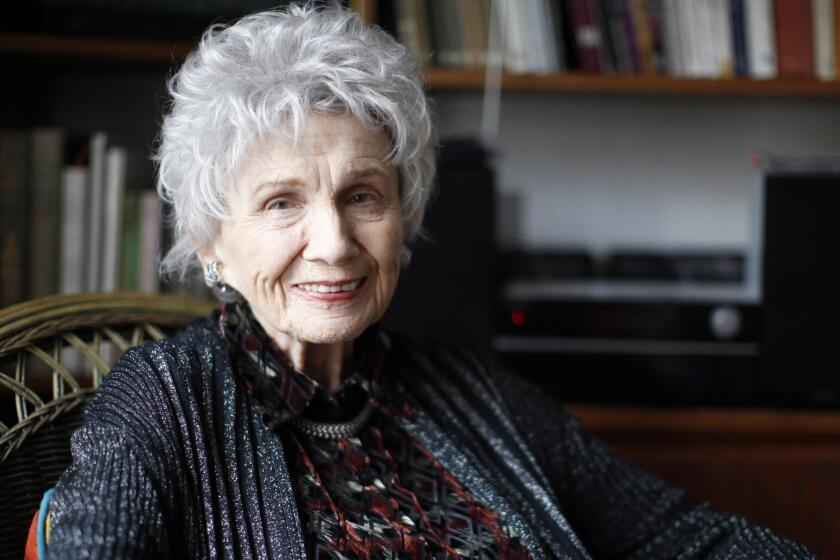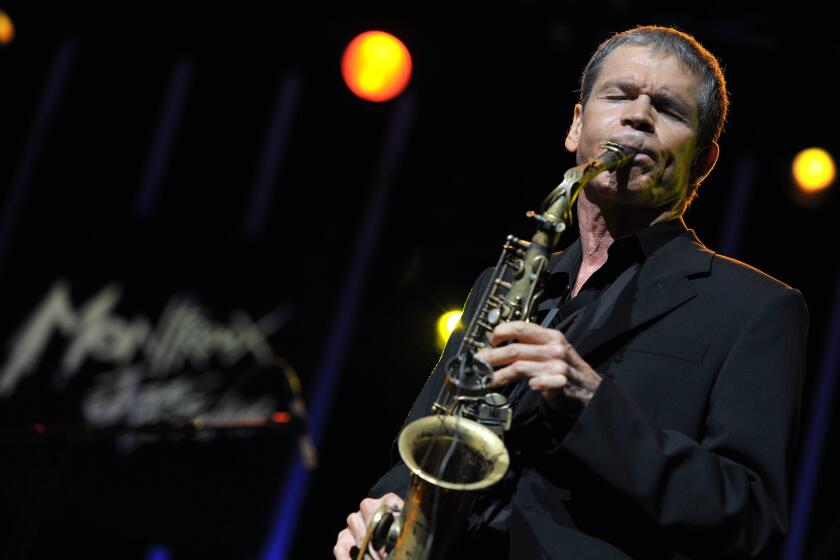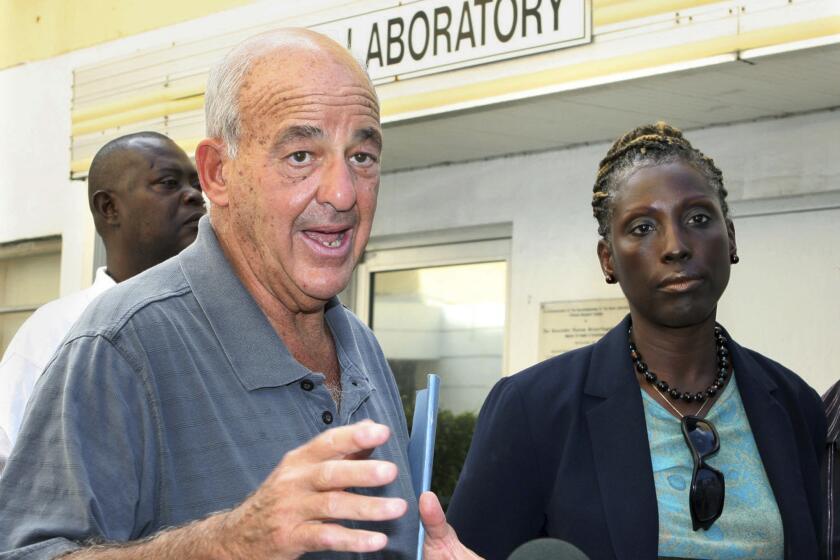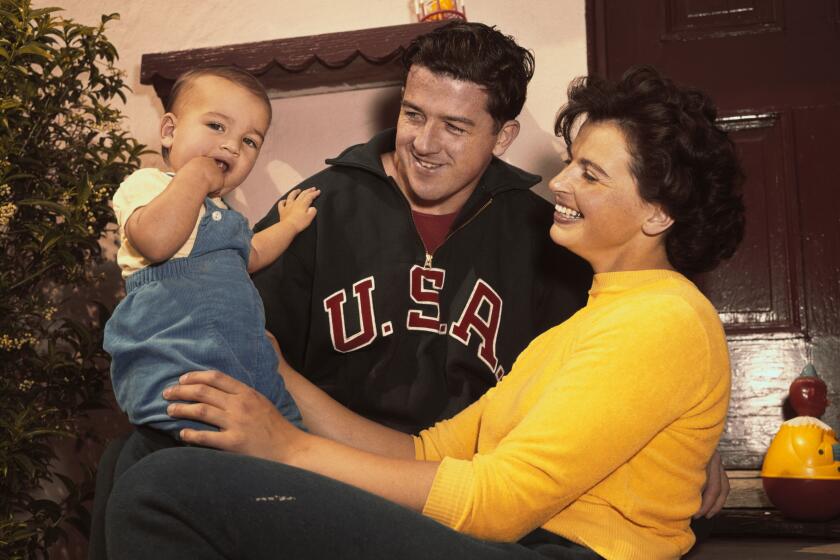From the Archives: Ansel Adams, Artist With a Camera, Dies
Ansel Adams, whose camera celebrated nature’s wonders and whose life was dedicated to perpetuating the purity of its creations, has died.
Death came late Sunday at age 82 in Community Hospital of the Monterey Peninsula, near Big Sur, where he had lived, photographed and battled for his beloved environment.
Adams had undergone heart surgery in 1979 and was admitted to the hospital last Friday with his recurring heart problem.
Adams and Edward Weston were the two names most often mention when historians tried to decide when photography had moved from the realm of hobbyists and was accorded a niche in the world’s art salons and museums.
Assignments From Within
And it was Adams, the gruffly pleasant bear of a man, who generally is credited with taking Weston’s visions of unsullied clarity and moving them from the curious to the commercial, providing throughout his lengthy and prolific career thousands of negatives and prints from the photographic assignments that he said came “from within.”
At his death, more than a million books of his photographs rested on coffee tables and in libraries throughout the world.
A single Adams photograph once commanded $70,000 and more important to Adams the man, 5,000 students had trudged to his studio and then on with him to view the scenic glories of the United States, watching as the aging master set up his tripod to capture what he said were the “images and not just records” of their world.
Like those early students who worshiped him, the photographer—whose “Moonrise, Hernandez, New Mexico” and “Moon and Half Dome, Yosemite National Park,” would one day hang in museums around the world—began with a Kodak Brownie box camera.
He was a gangly 14-year-old with a nose that tilted angularly left, the result of a falling wall during a aftershock from the 1906 San Francisco earthquake.
(“The doctor said to get it straightened when I matured,” Adams loved to say. “But of course, I never matured.”)
A year earlier his father, a successful businessman, had given his a pass to the World’s Fair in San Francisco. Adams spent most of his time at the Armory Show, the revolutionary modern art display transplanted from New York that gave prosaic America its first glimpse of the impressionists and surrealists.
He also had been exposed to a book, “In the Heart of the Sierra,” part of the tutoring program his parents had designed for him when he opted to give up formal schooling.
“A-A,” as he would someday be known to friends, bought a simple camera, hoping to combine a vacation trip to Yosemite, the excitement of abstract art and his blooming vicarious sentiments for the High Sierra into a new interest.
Returned to Yosemite
At the time he was an accomplished, albeit beginning pianist and was leaning toward a career in music.
His vacation pictures fell far short of his dreams, however, and he talked a San Francisco photofinisher into a job as an apprentice.
Adams continued to return with his camera to Yosemite every summer, as he would for the next 60 years, joining the young Sierra Club and working summers as caretaker at the club’s headquarters in the Yosemite Valley.
He learned to climb the mountains where climate and light varied with shifting wind and cloud patterns. He also learned of “conservation,” long before it was a cocktail hour byword.
Photography remained a hobby and music a predilection at this time, but his visits to the mountains, “filter through me into some aesthetic experiences which probably were supported by similar experiences I was having in music study,” he told an interview in 1975.
It wasn’t until 1930, after trying to serve both masters, that his “own personal satisfaction with the pictures was greater than with music.”
But by then the self-proclaimed “photo-poet” was tired of having to deal with the popular notion of photography as “painting with a lens.”
He had produced a mildly successful portfolio of the High Sierra that proved his knowledge of technique but left him personally dissatisfied.
‘Photography Exists’
Still seeking the modernist vision that had first stirred him at the Armory Show, he took his pictures to master photography Paul Strand who talked to him of organization and composition.
Years later he would say:
“I came home thinking: Now photography exists.”
Within a few months he had met a fellow seeker of visual truth, Weston.
In 1932 he, Weston, Imogen Cunningham and Willard Van Dyke formed the loosely know “Group F/64,” devoted to high contrast realism.
(The name was adopted from the smallest camera lens opening then available. If offered the greatest depth of field and therefore the sharpest images.)
Although the group would exist formally for only two years, its impact on the world’s then-newest art form continues to this day. He had married in 1928 and, to support himself, was taking on “assignments from the outside” that did not interfere with “assignments from the inside,” his term for “visualization” of the trees, rocks and leaves he found and illustrated in his beloved Sierra.
He began accepting the students that would one day include the daughter of a President (Susan Ford). The alacritous acceptance of the “Group F/64” concept of crispness in pictures now brought offers from photography magazines and product manufacturers.
And now he had words for his craft:
“A photograph is not an accident, it is a concept.” Pictures, he explained, were composed in the mind and only then recorded by the camera.
In 1935 he published “Making a Photography,” the first of his many manuals on technique in which he noted that the making of many negatives in the hope that one will be good “is fatal to serious results.”
His reputation was growing and in 1936 Alfred Stieglitz, perhaps the world’s best-known photographer, arranged a one-man Adams show in New York City, the first since A-A’s former mentor Strand had shown there in 1917.
Adams by now had moved to the Yosemite Valley, and his feel for its mountains and valley began to transcend just photography.
As official photographer and a director of the Sierra Club, he had traveled to Washington to show his photographs of Kings Canyon and to lobby for a bill that would preserve that area as a national park.
The result was not immediately successful but his efforts had come to the attention of Interior Secretary Harold L. Ickes. By 1940 Ickes had shown the photos to President Franklin D. Roosevelt and the resultant presidential arm-twisting produced from Congress what Adams considered a personal monument—the establishment of 455,000 acres as the Kings Canyon National Park.
His first ecological triumph was followed quickly by a professional one. In 1942 he had stopped his car in New Mexico to take, in 15 seconds, a photograph that four decades later commanded $71,500 at auction.
It was the moon rising over the village of Hernandez. It, with another photo of the moon shining over Half Dome in Yosemite, taken in 1960, became synonymous with Adams’ name.
The two photos were archetypically Weston—the preconceived clarity felt before the shutter was snapped and then transferred to film and paper. To Weston’s theory of visualization Adams brought his own contributions—a system of film exposure to predetermine the tones of the print.
It has become known as the Adams zone system, and he soon was teaching it at the California School of Fine Arts (later the San Francisco Art Institute) where he founded the first photography department in 1946.
He also was teaching at Art Center in Los Angeles, lecturing at the Museum of Modern Art in New York and at colleges throughout the West.
Between 1948 and 1956 he published four photography books and in 1949 was named a consultant to Polaroid Corp., working with Edwin Land on the Polaroid Land process.
Answered Critics
He also answered those who criticized “Group F/64” adherents for photographing trees and mountains while the nation struggled through the Great Depression and World War II.
He published a book of the photographs he had taken of the thousands of Japanese-Americans interned in the Manzanar Relocation Center in California during the war. Its wry title was “Born Free and Equal.”
His spreading fame resulted in “The Eloquent Light,” a 1963 biography of Ansel Adams published by the Sierra Club.
He was a Sierra Club director from 1936 to 1970, and his many trophies include the Conservation Service Award of the Interior Department.
He was an untypical artist — outspoken, opinionated and highly political when it came to his dearly loved scenery.
He warred against those trying to develop Big Sur and led a drive to oust Interior Secretary James G. Watt for “halting 100 years of growth of the national park system.” His attacks on Watt lead President Reagan to seek a meeting Adams — a session held in July, 1983. Adams afterward pronounced Reagan “opaque — a substance that does not permit the passage of light . . . in either direction.”
‘Real Ham’
Until his hospitalization the artist-advocate had been working to limit Reagan to one term.
Adams’ personality lent itself to public display and theatrical statements.
“You’ll understand him better,” painter Georgia O’Keeffe — a longtime friend — told a prospective interviewer in 1979, “if you think of him as a real ham, the eternal life of the party.”
His leathery countenance was on the cover of Time magazine on Sept. 3, 1979, the first photographer ever honored there.
In 1980, President Jimmy Carter awarded him the Presidential Medal of Freedom for his “visionary efforts to preserve this country’s wild and scenic areas both on film and on Earth.”
This came after he had supported legislation to protect 100 million acres of the Alaska wilderness.
The boy with the Brownie box camera and a vision had become the Grand Old Man of Photography.
He was pleased but took the accolades lightly. They were but the gifts of man.
The greatest gift God had granted him, Adams said in a long-ago letter to photography Stieglitz written from New Mexico, was the Earth itself.
“It is all very beautiful and magical here . . . a quality which cannot be described. The skies and land are so enormous and the detail so precise and exquisite that, wherever you are, you are isolated in a glowing world between the macro and the micro—where everything is sidewise under you and over you, and the clocks stopped long ago.”
More to Read
Start your day right
Sign up for Essential California for the L.A. Times biggest news, features and recommendations in your inbox six days a week.
You may occasionally receive promotional content from the Los Angeles Times.






